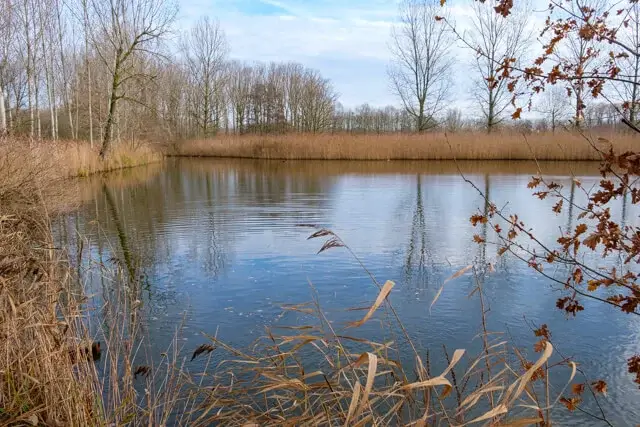Walking route
Heathland forest.


Heathland forest.
This walk goes through the Heidebos nature reserve that was once part of a large contiguous forest belt on the drifting sand ridge from Maldegem to Stekene. The route goes through a varied landscape of coniferous forest, deserted fields, heathland, sparse grasslands and drifts with beech trees.
Distance: 10 km.
Time: 2h30.
Grade: Easy.
Type: Circular.
Gps Track: Yes.
Route description: Yes.
Wheelchair: Not suitable.
Dog: Not allowed.
Height gain: Flat.
Trail: 98% unpaved.
Marking: See PDF route description.
Hiking shoes recommended.
Forest and heather.
The route winds through the forest along narrow paths that are full of royal ferns and somewhat broader lanes with beech and then cross a piece of heathland. Along the way you can find galloway cattle grazing in open spaces creating a half-open forest. Also exotic coniferous plantations were removed to give the heath a chance again. At the end of the route you walk along the edge of the forest and you have a beautiful view of the vast polder plains. Depending on the season you will still be able to admire beautiful broom, St. John's wort, the purple heather or beautiful autumn colors of beech.
Download PDF for route description and map.
POI 1 - Heidebos Nature Reserve.
Endless enjoyment of the landscape, spotting rare plants or studying colorful butterflies: it is all possible in Heidebos. Polders and creeks are in control in the north of East Flanders. To the south of it, from Maldegem to Stekene, there is a broad sand ridge that contains plants and animals that you would expect in the Kempen, such as heather, nightjar and tree pipit. Majestic avenues and remains of an old fort: the Heidebos has it all. In not one East Flemish nature reserve of Natuurpunt there has been as much work done in the last ten years as in the Heidebos. The American bird cherry had displaced all native species over large areas. Nowadays, seedlings of the forest plague are sprouting up, but these are expertly removed by hand. Through a LIFE project, Natuurpunt was able to transform boring plantations of spruce and pine into indigenous deciduous forest where summer oaks and birches grow back in full glory. Between 1568 and 1648 the Eighty Years' War raged in this region. The Northern (Staatse) and Southern (Spanish) Netherlands stood opposite each other. This war was also a religious war between Protestants and Catholics. The Waasland was a front area. The Spaniards built a line of defense against Prince Maurits' more northern forts. These Spanish forts were often given the name of a saint. They were mainly earthen walls, surrounded by a canal. Inside the ramparts there was a primitive camp for the soldiers. At the former fort Francipany the old ramparts and canals are still clearly recognizable. The slope of the terrain indicates where the former defensive canal lay. There were other forts besides Fort Francipany. In 1645 the Spaniards built the Fort Ter West along the Parmavaart. This "canal" was dug by the Spaniards in the sixteenth century to supply the troops with the siege of Antwerp. The Francipany, Papemutsen and Ter West forts were almost in one row.
Additional information:
www.heidebos.be.















































